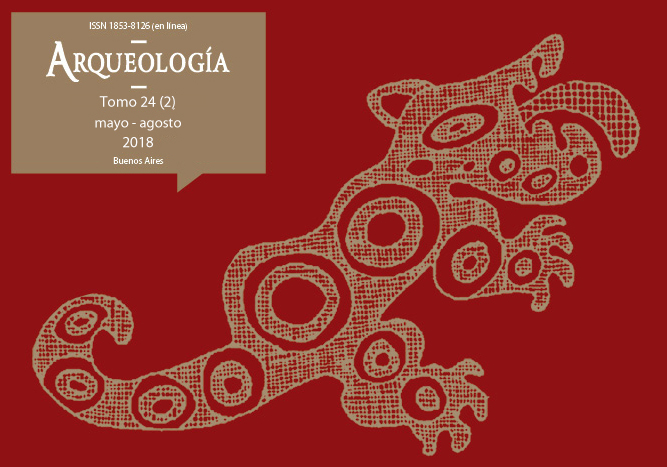Cocinar y alimentarse en tiempos de conquista. Reconstruyendo paquetes culinarios a partir de análisis cerámicos y arqueofaunísticos (Mendoza, siglos XV-XVII)
Palabras clave:
Arqueología de la alimentación, Prácticas culinarias, Zooarqueología, Cerámica
Resumen
En este trabajo estudiamos los modos de comer y preparar los alimentos en el “valle de Güentata”, actual ciudad de Mendoza, entre los siglos XV y XVII. El objetivo es reconstruir parte del paquete culinario a partir de la integración de dos líneas de evidencia y analizando aquellos materiales recuperados en excavaciones arqueológicas en el Área Fundacional de Mendoza: la alfarería indígena y los restos arqueofaunísticos. Desde el marco de la arqueología de la alimentación, analizamos la inclusión de estos materiales en las sucesivas etapas de obtención y distribución del alimento, de la preparación y cocción, y su presencia en el servicio y consumo, en contextos de cambio cultural signados por la conquista española del territorio. Para ello tuvimos en cuenta tres elementos centrales: el medio, las prácticas culturales (técnicas y conformación de dietas) y la ideología. Los resultados permitieron establecer que el sector Pilastra Noroeste del predio Ruinas de San Francisco constituyó originalmente un contexto vinculado a la cocina, donde se habrían combinado técnicas de cocción de tradición indígena con ingredientes tanto locales como exóticos.Descargas
La descarga de datos todavía no está disponible.
Cómo citar
Castillo, L., Araujo, E., Chiavazza, H., & Prieto-Olavarría, C. (1). Cocinar y alimentarse en tiempos de conquista. Reconstruyendo paquetes culinarios a partir de análisis cerámicos y arqueofaunísticos (Mendoza, siglos XV-XVII). Arqueología, 24(2), 109-132. https://doi.org/10.34096/arqueologia.t24.n2.5003
Sección
Artículos
Los autores/as que publiquen en esta revista aceptan las siguientes condiciones:
- Los autores/as conservan los derechos de autor y ceden a la revista el derecho de la primera publicación, con el trabajo registrado mediante Licencia Creative Commons 4.0 Internacional (CC-BY-NC-SA), que permite a terceros utilizar lo publicado siempre que mencionen la autoría del trabajo y a la primera publicación en esta revista.
- Los autores/as pueden realizar otros acuerdos contractuales independientes y adicionales para la distribución no exclusiva de la versión del artículo publicado en esta revista (p.e. incluirlo en un repositorio institucional o publicarlo en un libro) siempre que indiquen claramente que el trabajo se publicó por primera vez en esta revista.
- Se permite y recomienda a los autores/as a publicar su trabajo en Internet (p.e. en sus sitios web personales o en depósitos institucionales), tanto antes como después de su publicación en esta revista, siempre y cuando proporcionen información bibliográfica que acredite, si procede, su publicación en ella. De esta manera, pueden favorecerse intercambios productivos y a una mayor y más rápida difusión del trabajo publicado (vea The Effect of Open Access).



.png)

(1)13.png)






1.jpg)
1.png)
1.jpg)


13.png)
1.png)


(1)1.png)









